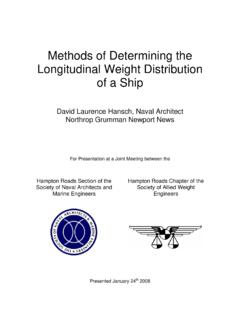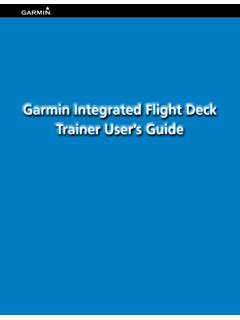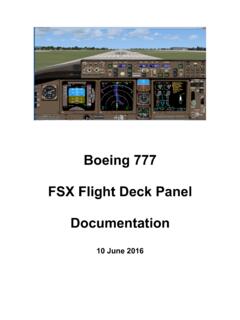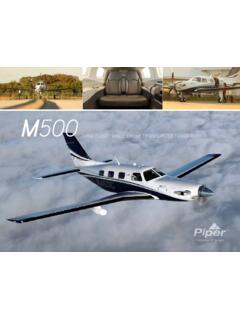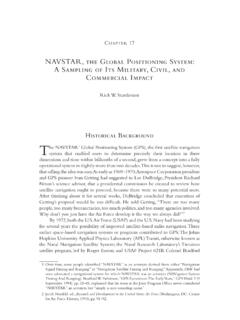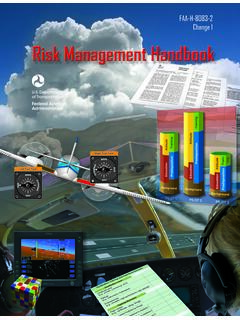Transcription of Expanded Work Breakdown Structure Weight Classification ...
1 INTERNATIONAL SOCIETY OF ALLIED WEIGHTS ENGINEERS, INC. RECOMMENDED PRACTICE NUMBER XX Serving the Aerospace - Shipbuilding - Land Vehicle and Allied Industries Executive Director Box 60024, Terminal Annex Los Angeles, CA 90060 Date Issued 4 March 2011 Expanded Work Breakdown Structure Weight Classification Guidance Revision Letter 2 Prepared by Government - Industry Workshop Society of Allied Weight Engineers, Inc. All SAWE technical reports, including standards applied and practices recommended, are advisory only. Their use by anyone engaged in industry or trade is entirely voluntary. There is no agreement to adhere to any SAWE standard or recommended practice, and no commitment to conform to or be guided by any technical report. In formulating and approving technical reports, the SAWE will not investigate or consider patents that apply to the subject matter.
2 Prospective users of the report are responsible for protecting themselves against liability for infringement of patents. Notwithstanding the above, if this recommended practice is incorporated into a contract, it shall be binding to the extent specified in the contract. SAWE RECOMMENDED PRACTICE SAWE Recommended Practice No. XX 2 Change Record Issue No. Date Description Entered by 1 4/20/2010 Original Draft Matthew Yoder 2 3/4/2010 Second Draft Matthew Yoder SAWE Recommended Practice No. XX 3 Table of Contents 1 Scope .. 4 2 Purpose .. 4 3 Associated Documents .. 4 4 Definitions, Abbreviations, Acronyms .. 5 5 Weight Classification Guidance .. 6 integrated Power System (IPS).
3 6 Dual Band Radar (DBR) .. 6 Electronic Module Enclosures (EME), Rafts, and Skids .. 6 EME .. 6 Rafts .. 6 Skids .. 6 Fiber Optics .. 7 Total Ship Computing Environmental Infrastructure (TSCEI) .. 7 6 Three Digit Weight Classification System .. 8 100 HULL Structure .. 8 200 PROPULSION PLANT .. 18 300 ELECTRIC PLANT .. 28 400 COMMAND AND SURVEILLANCE .. 34 500 AUXLARY SYSTEM .. 47 600 OUTFIT AND FURNISHINGS .. 64 700 ARMAMENT .. 74 F00 LOADS (FULL LOAD CONDITION) .. 83 A. Appendix Group 100 Drawings .. 1 B. Appendix Group 200 Drawings .. 1 C. Appendix Group 300 Drawings .. 1 D. Appendix Group 400 Drawings .. 1 E. Appendix Group 500 Drawings .. 1 References .. 1 SAWE Recommended Practice No. XX 4 1 Scope This recommended practice provides clarification and guidance for implementing the Expanded Ship Work Breakdown Structure (ESWBS) Weight Classification system.
4 This guidance provides a common Weight system that transcends all ship classes. The recommended practice will provide a static Classification system based on the original 1985 ESWBS document and the current dynamic database. This document does not replace ESWBS for historical Weight keeping. The purpose of this document is to incorporate Weight Classification changes due to changing technology, construction practices, and other issues as they arise. 2 Purpose There is a need for guidance on the use of the current Weight Classification processes and practice. Currently there resides a different Weight Classification system for different ship classes based off of the 1985 ESWBS document. The current database for Weight Classification is available only online and does not contain detailed descriptions for Weight Classification .
5 Additionally, certain new technologies do not have a home in the current Weight Classification system. The purpose of this document is to provide clarification for using the ESWBS Weight Classification system in a static form that includes details. To correctly catalog new technologies additional Weight Classification is need in order to ensure commonality between ship classes. Some technology can be classified under the current Structure , requiring only additional definitions to be added to the current system. Additional groups are necessary to accommodate other technologies. To accommodate new technologies, this guidance has re-titled groups, created groups, and added detailed definitions to groups. As new technology becomes available additional guidance will be included to ensure commonality in Weight Classification .
6 3 Associated Documents This optional section should show complementary or other associated documents used with this RP. This is not a bibliography of citations used within this document; that is found at the end of the document. This recommended practice shall be used in conjunction with the following publications. When the following specifications are superseded by an approved revision, the revision shall apply. 1) Expanded Ship Work Breakdown Structure (ESWBS 1985) 2) NAVSEALOGCEN Electronic ESWBS Database. 3) SAWE RP 12 4) Marine Vehicle Weight Engineering 5) Society of Allied Weight Engineers ESWBS Workshop October 2010. SAWE Recommended Practice No. XX 5 4 Definitions, Abbreviations, Acronyms Table 1 Term Symbol Definition DBR Dual Band Radar Decks Continuous Structure that extends fore and aft from shell to shell EME Electronic Module Enclosures ESWBS ESWBS Expanded Ship Work Breakdown Structure IPS integrated Propulsion System Flats Intermediate deck that extends one or less stations Platform Intermediate deck that extends multiple stations but does not extend the length and breadth of the ship Rafts A common foundation that primarily houses equipment for a single function and/or system Skids A common foundation that houses equipment for multiple functions and/or systems SAWE Recommended
7 Practice No. XX 6 5 Weight Classification Guidance This Weight Classification guidance is to be used for applying Weight group Classification to Weight line items in a ship Weight database. The following section gives specific guidance on classifying different Weight items and systems. All Weight items not specifically described are to be placed in the three digit Weight group as dictated by their function or system they sustain. The 1st and 2nd digit levels are typically reserved for title cards. Section 5 provides guidance on select systems for clarification purposes. integrated Power System (IPS) The IPS employs the same power generation for both propulsion and ship power. IPS is a methodology change from previous ships that have separate systems for propulsion power and ship service power. Most of the IPS consists of existing technology and parts.
8 IPS components will be placed in groups based on their function. Historical databases may need to be adjusted when comparing a non-IPS ship with an IPS ship. The most notable change will be Weight moving from group 2 to group 3 as some of the propulsion systems will now be combined propulsion and ship service power generation systems. Dedicated propulsion generators will remain in group 235 as they remain a dedicated system. Dual Band Radar (DBR) DBR uses one array for two different radar search modes. DBR is considered a multi-function radar and is included in group 456 Multi-Function Radar Systems. Electronic Module Enclosures (EME), Rafts, and Skids EME Electronic Module Enclosures (EMEs) are designed to be installed as a unit with self contained environmental and power considerations. EMEs are designed to serve one functional group.
9 EME and all of its internal equipment shall be placed in the group that best describes its intended function. The EME Foundation belongs in group 188 Common Foundations. Rafts Rafts are defined as a common foundation that is houses equipment that serves a single designated function. The Weight of the Raft shall be placed with the group to which its function is best aligned. If a Raft houses more than one function but one single function remains primary, the Weight of the raft will be placed with the group to which its primary function is best aligned. If a raft serves as a foundation for multiple groups with no single primary function the Weight of the raft and its foundation belong in group 188 Common Foundations. The foundation for a raft belongs in group 188 Common foundations. Skids Skids are defined as a common foundation which is used to mount multiple pieces of equipment for multiple functions or systems.
10 Skids are used for ease of production and equipment mounting requirements. The equipment mounted on the skids may have individual foundation and dampers that are not part of the Weight of the skid. Individual equipment foundations mounted on the skid shall be placed in the group appropriate to SAWE Recommended Practice No. XX 7 the equipment. The Weight of the skid and skid foundation belong in group 188 Common Foundations. Fiber Optics Fiber optics is broken down into two separate Weight classifications. The fiber optic cable is treated as cable based on its function. For example; fiber optics cable used for lighting will be in group 331 Lighting Distribution. The second Weight Classification is Fiber Optic Cable Plants which includes fiber optic interconnection boxes, trunk cables and their associated connectors and splices.
